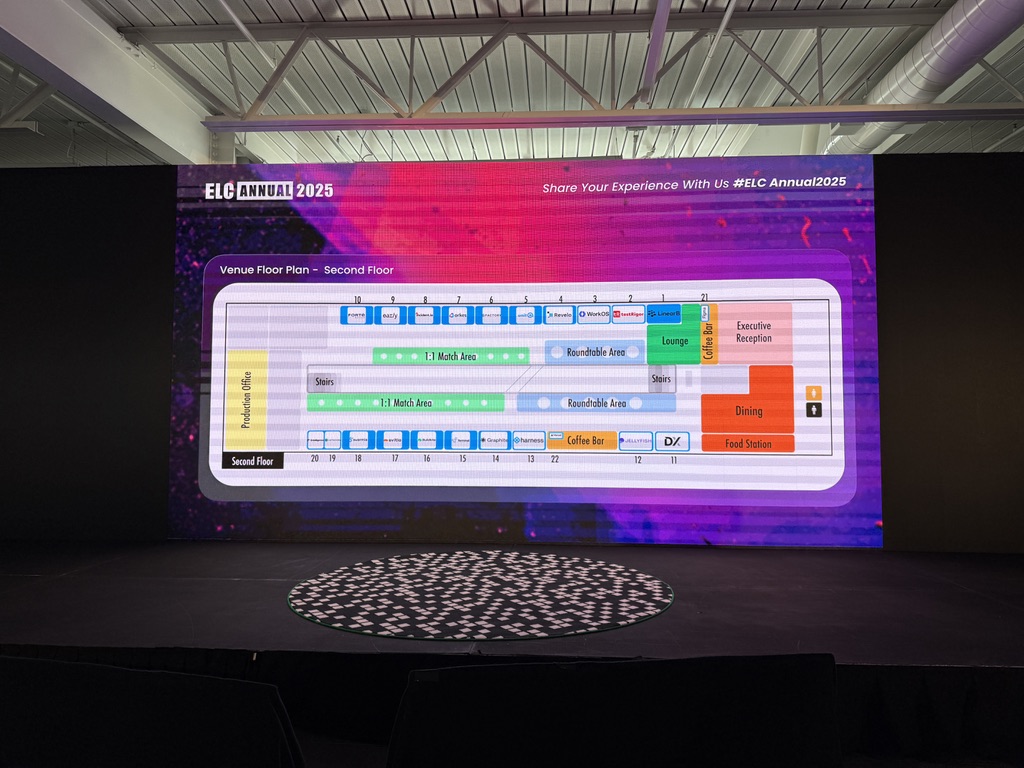 The ELC Annual 2025 conference brought together engineering leaders to discuss the future of AI in software development
The ELC Annual 2025 conference brought together engineering leaders to discuss the future of AI in software development
Earlier this fall, I had the opportunity to attend the ELC (Engineering Leadership Conference) Annual 2025 in San Francisco from September 10-11, 2025. This two-day event brought together some of the most influential engineering leaders from companies like OpenAI, Vercel, Harness, and many others to discuss the rapidly evolving landscape of AI in software development.
What struck me most about this conference wasn't just the impressive lineup of speakers, but the consistent themes that emerged across different sessions. While each company had their own unique approach to AI implementation, there were clear patterns in how successful organizations are thinking about and adopting these technologies.
Rather than focusing on individual speakers or specific company strategies, I want to share the broader trends and learnings that could benefit any engineering team navigating the AI revolution.
The AI Adoption Imperative
No Longer Optional
One of the most consistent messages across all sessions was that AI adoption is no longer a nice-to-have; it has become a competitive necessity. Companies that fail to effectively integrate AI tools into their workflows risk falling behind, not just in terms of productivity, but in their ability to attract and retain top talent.
The data is compelling: engineering teams using AI tools are seeing dramatic productivity improvements. One speaker mentioned that tasks that previously took 2 hours of investigation can now be completed in 15 minutes with AI assistance. This is not just about speed; it is about enabling engineers to focus on higher-level strategic work rather than getting bogged down in routine tasks.
Democratizing Engineering
Perhaps the most fascinating trend discussed was how AI tools are fundamentally changing the engineering landscape. What was particularly interesting is how these tools are enabling junior engineers to contribute at levels previously reserved for senior staff. The traditional "swim lanes" of engineering work are blurring as AI tools allow people to work outside their comfort zones and try new approaches.
This democratization extends beyond just coding. AI is becoming a collaborator, teammate, personal assistant, and coach for engineers at all levels. The best practices are emerging around treating AI as a true partner in the development process rather than just another tool.
Infrastructure and Scaling Challenges
The Hidden Complexity
While AI tools promise simplicity, the underlying infrastructure requirements are anything but simple. Multiple speakers highlighted the complex challenges around hardware selection, capacity planning, system reliability, and production optimization. The companies that are succeeding are those that can abstract away this complexity for their users.
One key insight was the importance of multi-cloud distribution for AI infrastructure. As AI applications become more critical to business operations, having resilient, globally distributed systems becomes essential. Companies are investing heavily in infrastructure that can handle the unpredictable nature of AI workloads while maintaining reliability.
Security and Trust
With great power comes great responsibility, and AI systems are no exception. The security discussions at the conference were particularly eye-opening. The consensus was clear: treat all AI outputs as untrusted, implement strong restrictions on tool calls, and use AI itself to detect malicious content. The "chaotic computing" nature of AI agents requires extensive logging and monitoring to maintain system integrity.
The Future of Human-AI Collaboration
Beyond Screens and Text
One of the most forward-thinking discussions centered on the shift from traditional screen-based interfaces to multimodal AI experiences. We are moving away from devices that only engage our visual and auditory senses toward systems that can interact with touch, taste, and other human senses. This represents a fundamental shift in how we think about user interfaces and product design.
The implications are profound: interfaces that fade into the background, AI as a co-creator rather than just a tool, and experiences designed for all senses rather than just screens. This multimodal future will require new design principles focused on transparency, personalization, and reliability.
Maintaining Human Value
Despite the rapid advancement of AI capabilities, there was strong consensus that human creativity and critical thinking remain irreplaceable. As AI becomes better at generating content and code, the value of human judgment, aesthetic sense, and creative problem-solving actually increases. The challenge for engineering leaders is to cultivate these uniquely human skills while leveraging AI for what it does best.
Organizational Implications
Flat Structures and Knowledge Discovery
Several companies shared how they are restructuring their organizations to take advantage of AI capabilities. One interesting approach was giving everyone the same technical title (like "Member of Technical Staff") to deliberately blur lines between expertise areas and encourage innovation from all levels.
Another key trend was the focus on making internal knowledge more discoverable. Companies are investing heavily in AI-powered search and knowledge management systems that can help engineers quickly find relevant information, past solutions, and context for their work. This is particularly valuable for onboarding new team members and avoiding duplicate work.
 The ELC Conference 2025 floor map showing the layout of sessions and networking areas
The ELC Conference 2025 floor map showing the layout of sessions and networking areas
Leadership in the AI Era
Engineering leaders are finding that AI tools are enabling them to shift from reactive "firefighting" mode to more strategic work. By using AI for self-service information gathering and analysis, leaders can make more informed decisions without constantly interrupting their engineering teams. The key is maintaining team ownership and agency while providing strategic guidance.
Practical Implementation Strategies
Start with High-Impact Use Cases
Rather than trying to implement AI everywhere at once, successful companies are focusing on high-impact use cases first. Common starting points include code generation and review, documentation creation, meeting summaries, and knowledge discovery. The key is to identify areas where AI can provide immediate value while building internal expertise.
Invest in Prompt Engineering
One surprising theme was the importance of prompt engineering as a core engineering skill. Companies are investing in training their teams on effective prompt engineering techniques, including meta-prompting (using AI to judge AI outputs) and tool-specific prompt optimization. This is not just about writing better prompts; it is about understanding how to effectively collaborate with AI systems.
Conclusion
The ELC Conference 2025 painted a clear picture: we are in the midst of a fundamental transformation in how software is built and how engineering teams operate. The companies that will thrive in this new era are those that embrace AI as a collaborative partner while maintaining focus on human creativity, critical thinking, and strategic vision.
The key takeaway for engineering leaders is to start experimenting with AI tools now, but do so thoughtfully. Focus on high-impact use cases, invest in your team's AI literacy, and maintain the human elements that make great engineering teams successful. The future belongs to organizations that can effectively combine human creativity with AI capabilities to solve problems we have not even imagined yet.
Relevant Links
ELC Annual 2025 Event:
https://elc.community/home/events/elc-annual-2025